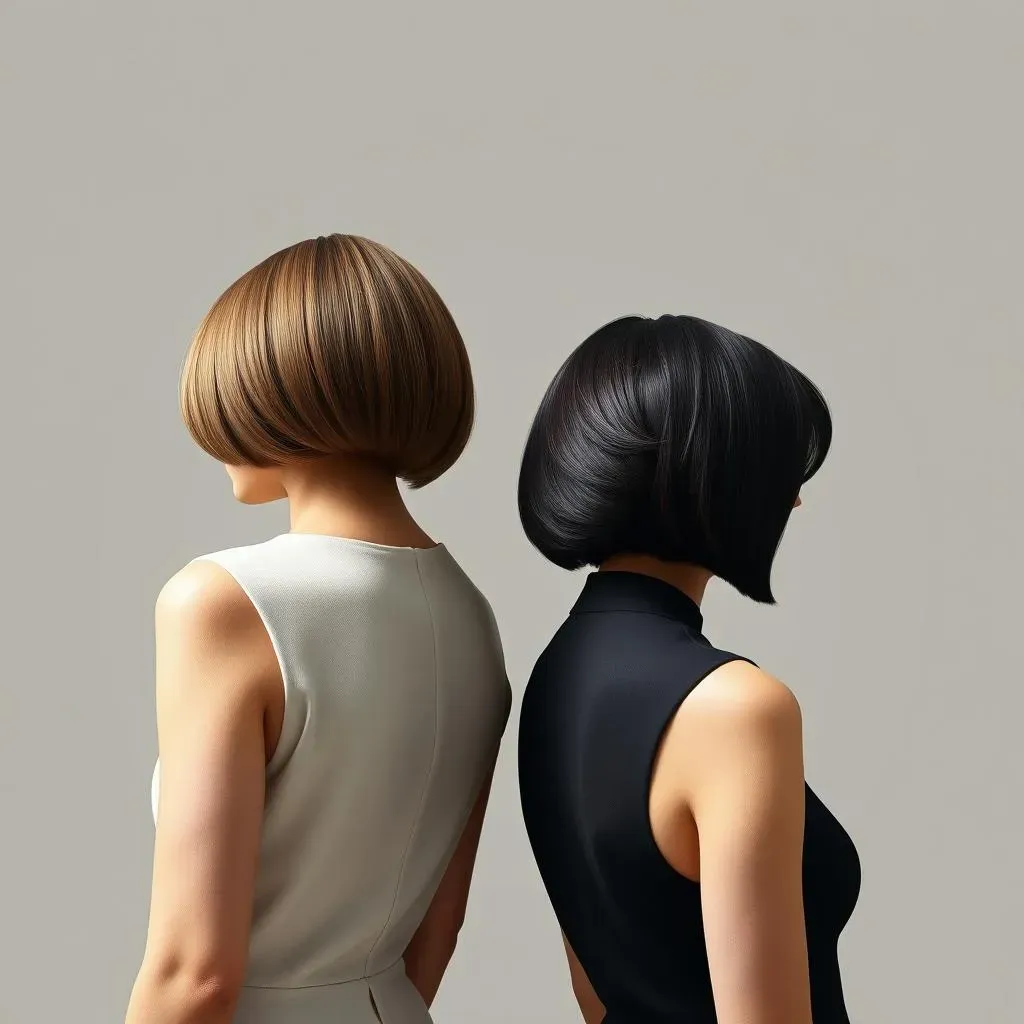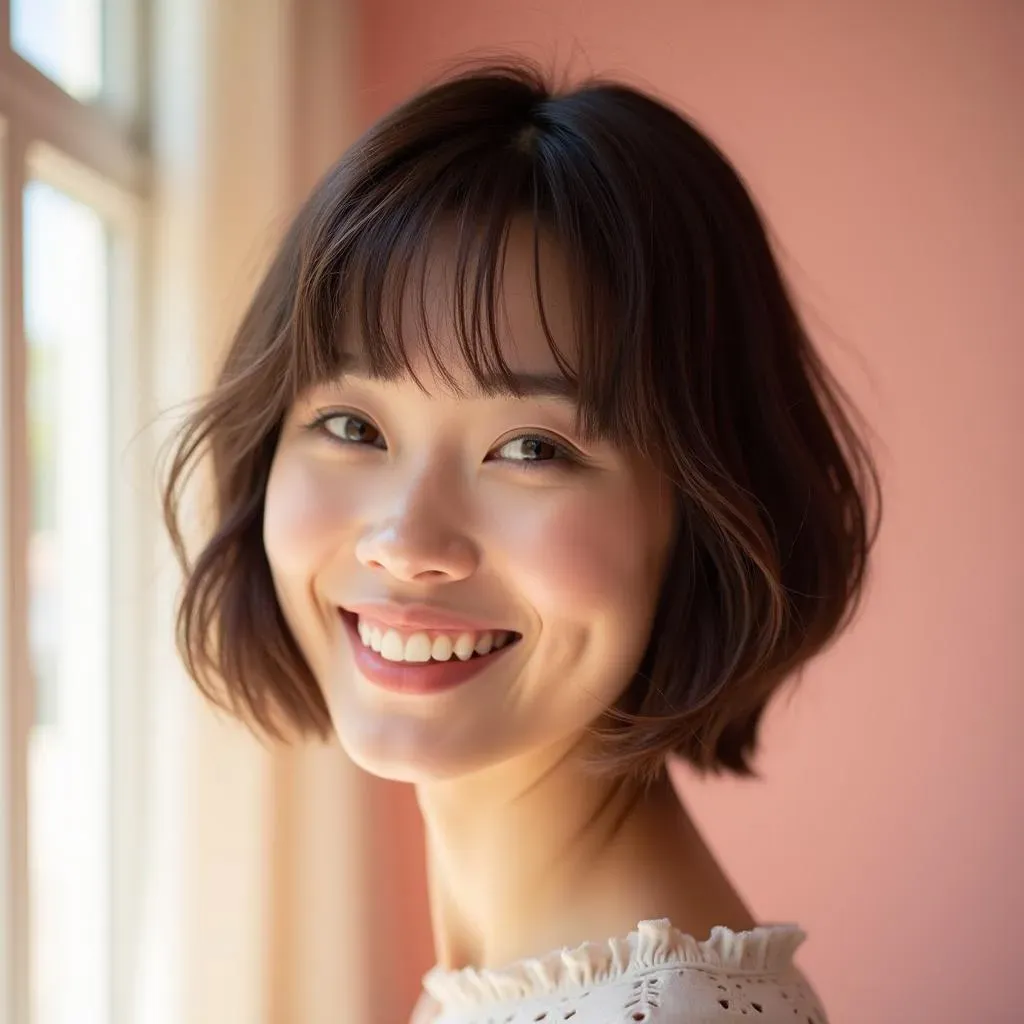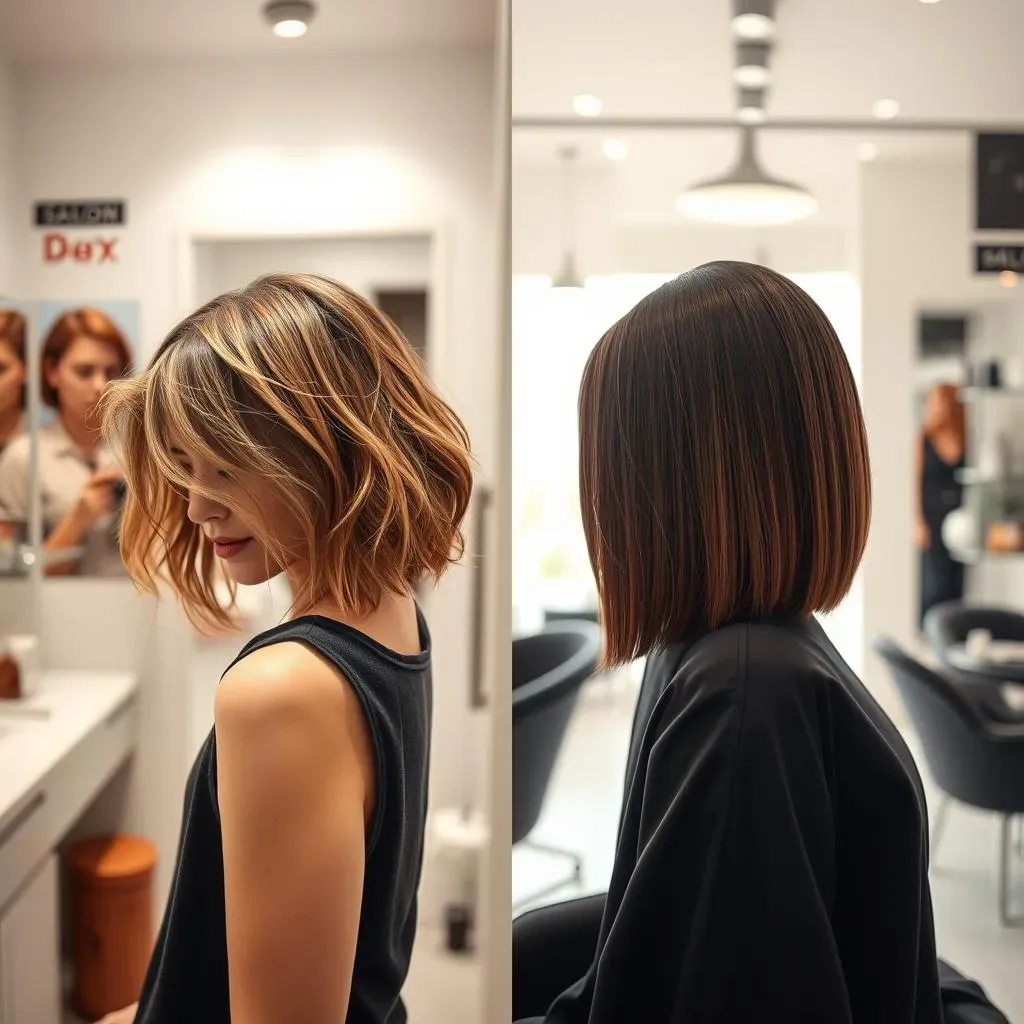The bob haircut is a timeless classic, constantly reinventing itself to stay fresh and stylish. But while we often focus on the front and side views, the bob hair cut back is just as crucial to the overall look. It's the foundation of the style, influencing the shape, volume, and even the perceived length. Are you ready to explore the often-overlooked world of bob haircuts from the back? This guide dives deep into why the back view matters, showcasing different bob styles and how their back views contribute to their unique appeal. We'll also cover how to choose the right bob for your hair type and face shape, and even touch on the DIY versus salon debate when it comes to achieving the perfect cut. Whether you're a seasoned bob enthusiast or considering your first chop, get ready to unlock the secrets to a stunning bob, from every angle.
Why the Bob Haircut Back View Matters

Why the Bob Haircut Back View Matters
The Foundation of the Shape
Think of the back of your bob as the architect of the entire style. It dictates the overall silhouette, influencing how the hair falls, its volume, and even the perceived length from the front. A well-executed back view can elevate a simple bob into a stunning statement, while a poorly cut one can throw off the whole look. It's not just about chopping off hair; it's about sculpting a shape that complements your features and personal style.
The angle of the cut at the back determines how the layers cascade, creating movement and texture. A slight graduation can add subtle volume, while a more dramatic angle results in a stacked bob with a bolder, more defined shape. The back view also plays a crucial role in balancing the front, ensuring that the style looks cohesive and intentional from every angle.
Balance and Proportion
The back view of a bob is essential for achieving balance and proportion. It ensures that the haircut complements your neck, shoulders, and overall body shape. A bob that's too short in the back can make the neck appear longer, while one that's too long can create a bulky or unbalanced look. Finding the right length and shape at the back is key to creating a harmonious and flattering style.
Consider how the back of your bob interacts with your clothing and accessories. A sleek, minimalist back view can be perfect for showcasing a statement necklace or a high-necked top. A more textured or voluminous back can add a touch of drama to a simple outfit. The back view is an integral part of your overall style, so it's important to pay attention to how it works with the rest of your look.
- Consider your neck length.
- Think about your shoulder width.
- Visualize the overall balance with your body shape.
Unlocking Versatility
Don't underestimate the versatility hidden within the back view of a bob. Subtle changes to the cut at the back can dramatically alter the entire style, allowing you to customize your bob to suit your individual preferences. A slightly angled back can create a more modern and edgy look, while a softer, rounded back offers a classic and sophisticated feel. The possibilities are endless!
Experiment with different textures and finishes at the back to further enhance the versatility of your bob. Add layers for movement and volume, or keep it sleek and smooth for a more polished look. Play with color and highlights to create depth and dimension at the back, adding visual interest and personality to your style. The back view is your canvas – get creative and make it your own.
For example, adding an undercut in the back creates a totally different vibe. It's unexpected and edgy, while still maintaining the overall bob shape. Or, consider a subtle V-shape for added interest. The back of the bob is where you can really let your personality shine!
Different Bob Styles and Their Back Views

Different Bob Styles and Their Back Views
The Classic Bob: Timeless Elegance
The classic bob is characterized by its blunt, even length, typically falling between the chin and shoulders. From the back, this translates to a clean, straight line that exudes sophistication and simplicity. There are no layers or graduation, resulting in a solid, defined shape. This style works well for those seeking a low-maintenance yet chic look. Its simplicity allows for versatility in styling – wear it sleek and straight for a polished appearance, or add waves for a more relaxed vibe. The back view is all about precision and clean lines, creating a sense of order and refinement.
However, don't think "simple" means boring! The classic bob's back view can be subtly customized. A slight A-line angle, where the front is just a touch longer than the back, adds a hint of modernity. Or, consider a center or off-center part to change the overall balance. The key is to maintain the clean lines while injecting your personal style. It's a blank canvas ready for your creative touch.
The Inverted Bob: Drama and Dimension
The inverted bob, also known as a graduated bob, features a shorter back that gradually angles down towards longer pieces in the front. The back view of this style showcases the stacked layers, creating volume and dimension. The degree of the angle can vary, from subtle to dramatic, depending on the desired effect. A steeper angle results in a more pronounced inverted shape and a bolder statement. This style is perfect for adding lift and fullness to fine hair, and it can also create a more defined jawline. The back view is all about showcasing the layers and the dynamic shape, adding visual interest and a touch of drama.
Think of the inverted bob as the "rebellious cousin" of the classic bob. The back view is where the magic happens – the stacked layers create a sense of movement and energy. Play around with different layering techniques to customize the shape and volume. For example, adding choppy layers can create a more textured and edgy look, while softer layers offer a more subtle and blended effect. The inverted bob is all about embracing asymmetry and creating a style that's both modern and eye-catching.
Bob Style | Back View Characteristics | Suitable Hair Type |
|---|---|---|
Classic Bob | Clean, straight line; even length | All hair types |
Inverted Bob | Stacked layers; angled from short to long | Fine to medium hair |
How to Choose the Right Bob Hair Cut Back for You

How to Choose the Right Bob Hair Cut Back for You
Face Shape Harmony
Choosing the right bob hair cut back starts with understanding your face shape. The goal is to create balance and highlight your best features. For example, if you have a round face, a bob that falls slightly below the chin with some layering at the back can add length and definition. Avoid bobs that are too short or too blunt, as they can accentuate the roundness. On the other hand, if you have a long face, a chin-length bob with some fullness at the back can add width and create a more balanced look. Bangs can also help to shorten the face and add softness. Square faces benefit from softer, layered bobs that soften the jawline, while heart-shaped faces look great with bobs that are fuller at the bottom to balance the wider forehead.
Don't be afraid to experiment and try different styles, but always keep your face shape in mind. Consider bringing photos of bobs you like to your stylist and discussing how they can be adapted to suit your individual features. A good stylist will be able to assess your face shape and recommend a bob that will flatter your appearance and make you feel confident.
Hair Texture and Type Considerations
Your hair texture and type play a significant role in how a bob will look and behave. Fine hair generally benefits from blunt cuts and minimal layering at the back to create the illusion of thickness. Avoid overly layered bobs, as they can make fine hair appear even thinner. Medium hair can handle more layering and texture, allowing for a variety of bob styles. Thick hair may require more strategic layering to remove weight and prevent the bob from looking too bulky. Curly hair can be tricky, but a well-shaped bob with the right layering can enhance the natural curl pattern and create a beautiful, voluminous style. It's crucial to work with your natural texture rather than against it.
When discussing your desired bob with your stylist, be sure to mention your hair texture and any specific concerns you have. They can recommend the best cutting techniques and styling products to achieve the look you want. For example, if you have fine hair, they might suggest using a volumizing mousse or spray to add lift at the roots. If you have thick hair, they might recommend using a smoothing serum or oil to control frizz and add shine. The right products can make all the difference in how your bob looks and feels.
Hair Texture | Recommended Bob Styles | Styling Tips |
|---|---|---|
Fine | Blunt bob, minimal layers | Volumizing products, root lift |
Medium | Versatile, can handle layers | Experiment with textures |
Thick | Strategic layers to remove weight | Smoothing products, control frizz |
Curly | Shaped bob with defined layers | Curl-enhancing products, diffuser |
DIY vs. Salon: Cutting a Bob Hair Cut Back

DIY vs. Salon: Cutting a Bob Hair Cut Back
The Allure of the DIY Bob
The idea of cutting your own bob at home can be incredibly tempting. It promises freedom, cost savings, and the satisfaction of a self-made style. YouTube tutorials showcase seemingly simple techniques, and the allure of instant gratification is strong. Imagine, a brand new bob hair cut back achieved in your own bathroom, on your own time, without the expense of a salon visit. For those who love to experiment and aren't afraid of a little risk, the DIY bob can be an exciting adventure. It's a chance to unleash your inner stylist and take control of your hair destiny.
However, let's be real. Cutting your own hair, especially a precise style like a bob, is not as easy as it looks. Those YouTube tutorials often gloss over the nuances of hair texture, head shape, and proper cutting techniques. What looks effortless on screen can quickly turn into a disaster in reality. Uneven lengths, choppy layers, and a lopsided back view are just some of the potential pitfalls. Before you grab those scissors, it's crucial to assess your skills, your patience, and your willingness to live with the results, good or bad.
The Expertise of a Salon Bob
Stepping into a salon and entrusting your hair to a professional stylist offers a completely different experience. You're paying for expertise, precision, and a trained eye that can assess your hair type, face shape, and personal style to create a customized bob that perfectly suits you. A skilled stylist will consider the nuances of your hair's texture, density, and growth patterns to ensure that the bob hair cut back is not only stylish but also easy to manage and maintain. They have the tools, the knowledge, and the experience to deliver a consistently flawless result.
While a salon visit comes with a higher price tag, it also offers peace of mind and a guarantee of quality. You can relax and enjoy the pampering experience, knowing that you're in the hands of a professional. A good stylist will also provide valuable advice on styling and product recommendations to help you maintain your bob at home. Investing in a salon bob is an investment in your confidence and your overall appearance. It's a way to ensure that you get the best possible result and avoid the potential pitfalls of a DIY haircut.
Factor | DIY Bob | Salon Bob |
|---|---|---|
Cost | Low (scissors, mirror) | High (stylist fees) |
Expertise | Requires skill and knowledge | Professional stylist |
Risk | High (uneven cut, mistakes) | Low (guaranteed quality) |
Convenience | Flexible, on your own time | Requires appointment |
The Final Cut: Mastering Your Bob Hair Cut Back
Ultimately, the perfect bob isn't just about what you see in the mirror head-on. The bob hair cut back is a critical element that defines the entire style. By understanding the nuances of different back views and how they complement various bob shapes, you're empowered to make informed decisions and achieve a haircut that truly reflects your personal style. Whether you opt for a professional salon experience or dare to DIY, remember that attention to detail, especially at the back, is key to rocking a flawless bob. So go forth, experiment, and discover the transformative power of a well-executed bob hair cut back!